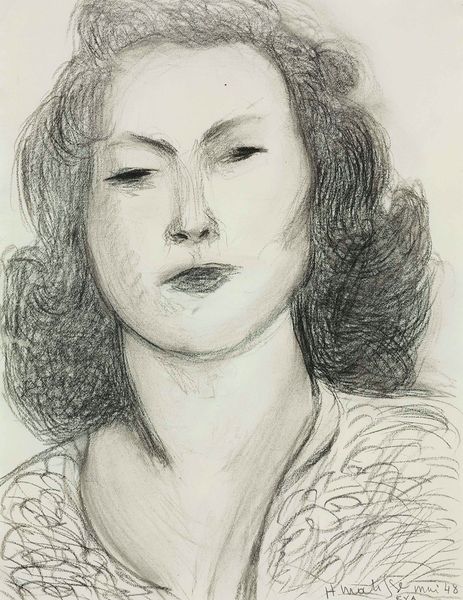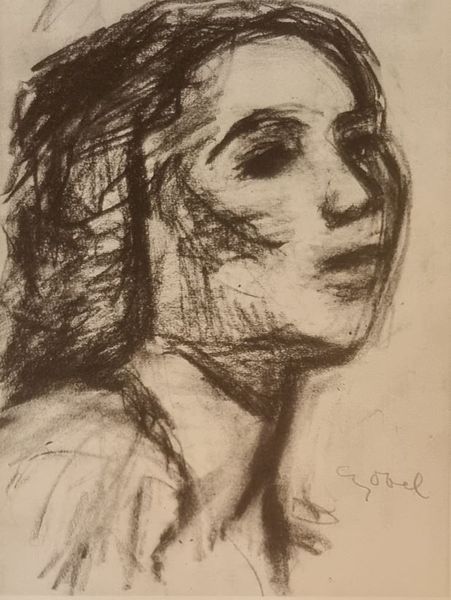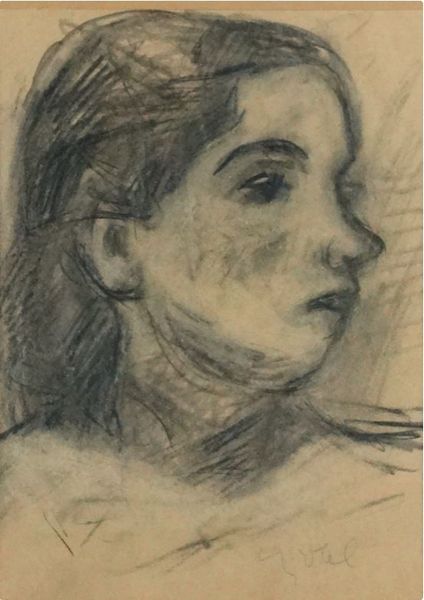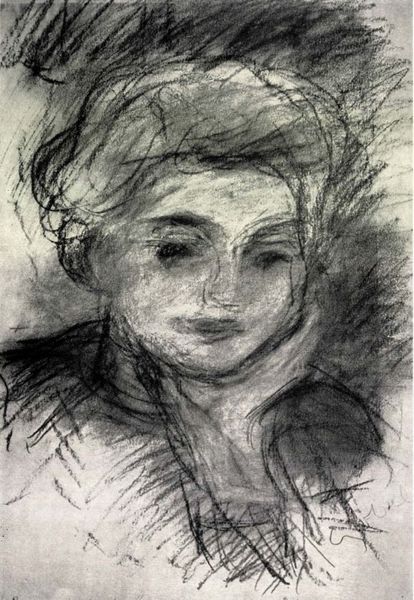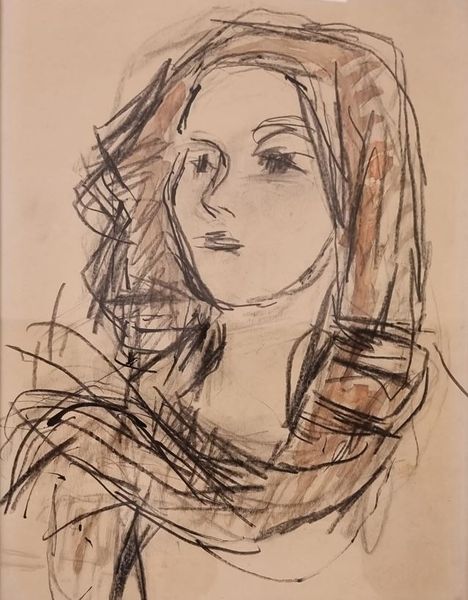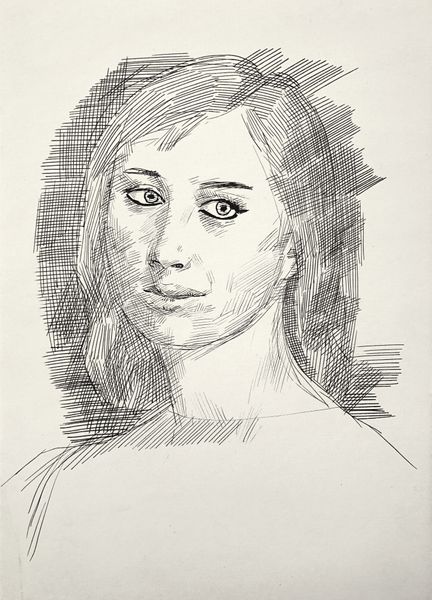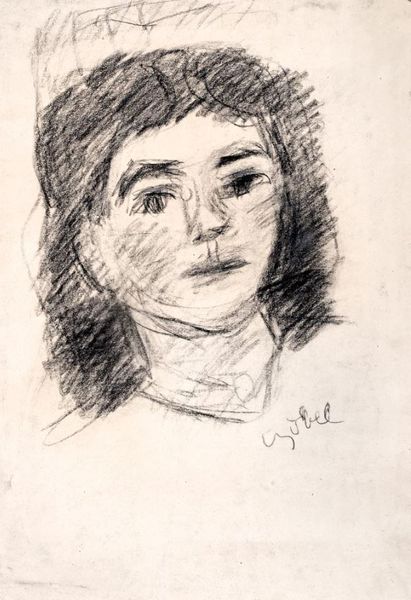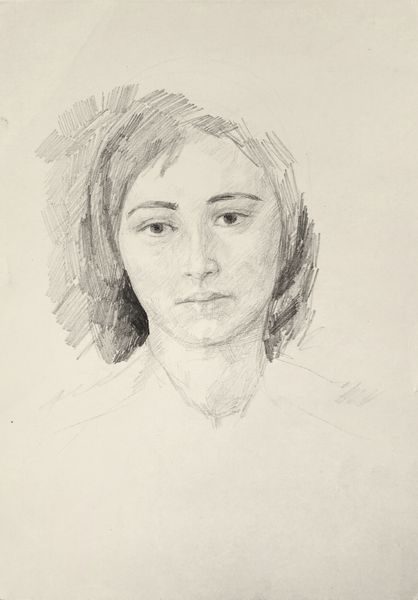
#
pencil drawn
#
amateur sketch
#
facial expression drawing
#
light pencil work
#
pencil sketch
#
portrait reference
#
idea generation sketch
#
pencil drawing
#
animal drawing portrait
#
portrait drawing
Copyright: Bela Czobel,Fair Use
Curator: I am immediately struck by the tentative, almost vulnerable quality of the lines. The portrait appears unfinished, allowing the viewer to project their own interpretation. Editor: Here we have "Czobel Béla Drawing Women Head 1930," a pencil drawing by Hungarian artist Béla Czóbel. The work epitomizes the period’s interest in exploring the expressive possibilities of line and form, but let's also not forget about the support on which this all took place, probably a humble paper likely made from wood pulp. Curator: True, but focus for a moment on the artist's method. Notice how Czóbel utilizes a network of intersecting lines, eschewing traditional shading for a more abstract representation of light and shadow. Editor: The hasty technique gives off an interesting note regarding production: one sees in the frenetic mark-making an efficient process where labor and resources might have been tight or at least rationed according to social class in an era of austerity and conflict, reflecting the social context in its very facture. Curator: I interpret it as the artist's internal state made manifest, a sort of visual shorthand for the complexities of human emotion. The dark, hollow eyes contrasting the softer curves elsewhere, invite a deeply psychological reading. Editor: Maybe, but given Czóbel’s Hungarian background—we can’t avoid the legacy of material scarcity shaping so much Eastern European production, including how something delicate emerges when faced with economic constraints—do you agree? Curator: An interesting viewpoint; I confess I tend to lean more into its universal artistic merit rather than being solely shaped by regional influence. Ultimately, I find this a powerful drawing precisely because it resists easy categorization, inviting endless interpretations of form. Editor: Perhaps both of us, with our differing emphasis, arrive to similar conclusion, one centered in its materiality while the other on abstract concepts, can recognize and value the labor, resourcefulness, and ingenuity invested in its production and visual significance.
Comments
No comments
Be the first to comment and join the conversation on the ultimate creative platform.

